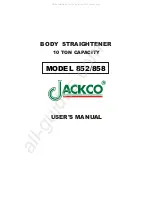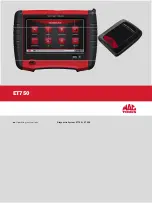
183
Chapter 5 EDIT Mode
Chapter 5
FILTER Function
LowPass2
Low-pass filter #2. Offers much higher Q (resonance) than low-
pass filter #1.
HiPass1
High-pass filter #1. (A high-pass filter blocks out all frequen-
cies below the cutoff frequency.)
HiPass2
High-pass filter #2. Offers much higher Q (resonance) than high-
pass filter #1.
BandPass
Band-pass filter. (Allows only frequencies near the cutoff fre-
quency to pass; blocks out all higher and lower frequencies.)
BandElim
Band-eliminate filter. (Blocks out the frequency range around
the cutoff frequency, while allowing higher and lower frequen-
cies to pass.)
These frequencies
are cut.
These frequencies
are cut.
Cutoff
These frequencies
pass.
Level
Frequency
Low Pass
High Pass
Cutoff
These frequencies
are cut.
Q emphasis
These frequencies
pass.
Level
Frequency
Cutoff
These frequencies
are cut.
These frequencies are cut.
These frequencies pass.
Level
Band Pass
Frequency
Cutoff
These frequencies
pass.
These frequencies
pass.
Level
Band-Eliminate
Frequency
Q emphasis
Knob 3
Cutoff
=
0
,...,
127
Use this knob to set the filter’s cutoff frequency.
Knob 4
FltGain
=
-31
,...,
+31
• Use this knob to set the filter’s output level.
• Note that high settings may produce distortion when used with certain sample sounds
or when many samples are played together.
Knob 5
Q/Width
=
0
,...,
31
This knob sets the Q value (resonance) or width setting, depending on the filter type.
• If you select a low-pass or high-pass filter, this setting selects the Q value. The Q value
determines the amount of emphasis applied to frequencies that are very close the
cutoff point. (See drawing above.) Higher settings produce stronger emphasis. Note
that high settings for a LowPass2 or HiPass2 filter may produce distortion with cer-
tain samples.
• If you select the band-pass filter, this setting determines the width of the band that is
allowed to pass. Increasing the setting will widen the band, allowing more frequen-
cies to pass.
• If you select the band-eliminate filter, this setting determines the width of the fre-
quency ranges that are allowed to pass. Increasing the setting will allow more fre-
quencies to pass (will reduce the elimination zone). Note that the elimination band
itself becomes narrower as you increase the value.
Summary of Contents for A3000
Page 1: ...Owner s Manual ...
Page 20: ...18 ...
Page 21: ...1 1 Chapter 1 Setting Up ...
Page 36: ...34 Chapter 1 Setting Up ...
Page 37: ...2 2 Chapter 2 Trying It Out ...
Page 71: ...3 3 Chapter 3 Basics ...
Page 95: ...4 4 Chapter 4 PLAY Mode ...
Page 145: ...5 5 Chapter 5 EDIT Mode ...
Page 220: ...218 Chapter 5 EDIT Mode MIDI CTRL Function ...
Page 221: ...6 6 Chapter 6 RECORDING Mode ...
Page 249: ...7 7 Chapter 7 DISK Mode ...
Page 280: ...278 Chapter 7 DISK Mode ...
Page 281: ...8 8 Chapter 8 UTILITY Mode ...
Page 313: ...A A Appendix ...
Page 365: ...I IIndex ...
Page 370: ...MEMO ...
Page 371: ...MEMO ...
Page 375: ......
Page 376: ...705CRIT8 2 02B0 Printed in Japan VZ04450 M D G EMI Division Yamaha Corporation 1997 ...
















































